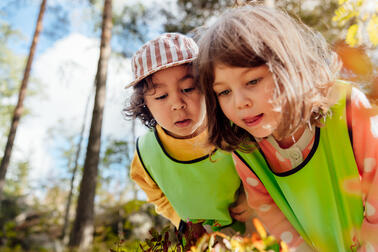Collaboration of the entire organisation
Special Planner Stina Högnabba from the City of Helsinki says that the Child Friendly Cities work is not separate from the rest of the city’s work. Even the City Strategy emphasises equality and the rights of all population groups.
The city’s Chief Design Officer Hanna Harris agrees. She also reminds us of a familiar and true statement about how a child-friendly environment is good for everyone.
In her opinion, child-friendliness has provided the city with a great opportunity to develop how the city is able to support the wishes of its residents, in this case, the wishes of children and young people.
In order to implement the wishes, the city has engaged in intersectoral cooperation using a model for which the city’s personnel has received training from Harvard University.
A new kind of concrete work with children and young people has begun. For example, children and young people have highlighted shortcomings in their home neighbourhoods, and these observations have been addressed.
“We have conducted numerous experiments in which, together with children, we have improved the places that are important to them. For example, we have replaced lighting and made certain squares more enjoyable in accordance with the wishes of children and young people. The idea has been to involve children and young people in the activities on a low threshold.”
Harris says that the results have been good. Comfort and safety have increased. Children and young people are now more committed to the development of their neighbourhood.
The new architecture programme outlines the promotion of child-centred design. In Harris’s opinion, the programme’s outlines offer the city a great opportunity for new kinds of experiments and diverse implementations.
In the urban renewal areas of Malminkartano, Kannelmäki, Malmi, Mellunkylä and Meri-Rastila, the city has looked for and continues to look for ways to increase the sense of security together with children and young people.
In addition to the child impact assessment model, the city has completed a new model to facilitate planning and preparation, which will increase the inclusion of children and young people. The feedback system has been developed so that the children’s voice is heard better than before.
Schools prevent bullying, for example, by training staff, teaching emotional and interpersonal skills and by using an intervention model.
The Child Friendly Cities work is also well suited for promoting well-being, health and everyday safety.
“There is still plenty to do”
The city has received good ideas for the continuation of the work and started working on structural reforms so that children and young people can be more closely involved in the development.
The work must be continuous, as UNICEF monitors the achievement of new goals.
“Every couple of years, UNICEF will check how the Child Friendly Cities work is progressing and how the city is succeeding with its goals. The city’s management is committed to work in accordance with the UNICEF operating model and has also allocated resources for this purpose,” Högnabba says.
Later in the autumn, the city will decide on the next Child Friendly Cities goals.
The UNICEF model highlights the need to pay special attention to disadvantaged children and young people. In Högnabba’s opinion, this is one of the things the city still needs to work on. There is also a lot of work left in preventing segregation, which directly affects children’s lives.
When we started working with UNICEF, we carried out a comprehensive study of how children’s rights are implemented and reflected in the city’s services, as well as how we respond to the situation. This is a good place to continue from.
Training on the rights of the child continues. Especially those who work with children should understand what the rights of the child mean in practice.
The rights of the child have 45 articles. They state, for example, that the best interests of the child must always be a primary consideration in decisions concerning the child. The child has the right to express their opinion on all matters concerning them, and this must be taken into account in accordance with the child’s age and maturity.
“When we started working with UNICEF, we carried out a comprehensive study of how children’s rights are implemented and reflected in the city’s services, as well as how we respond to the situation. This is a good place to continue from,” Högnabba says.
Author: Kirsi Riipinen
Photo: Jussi Hellsten




